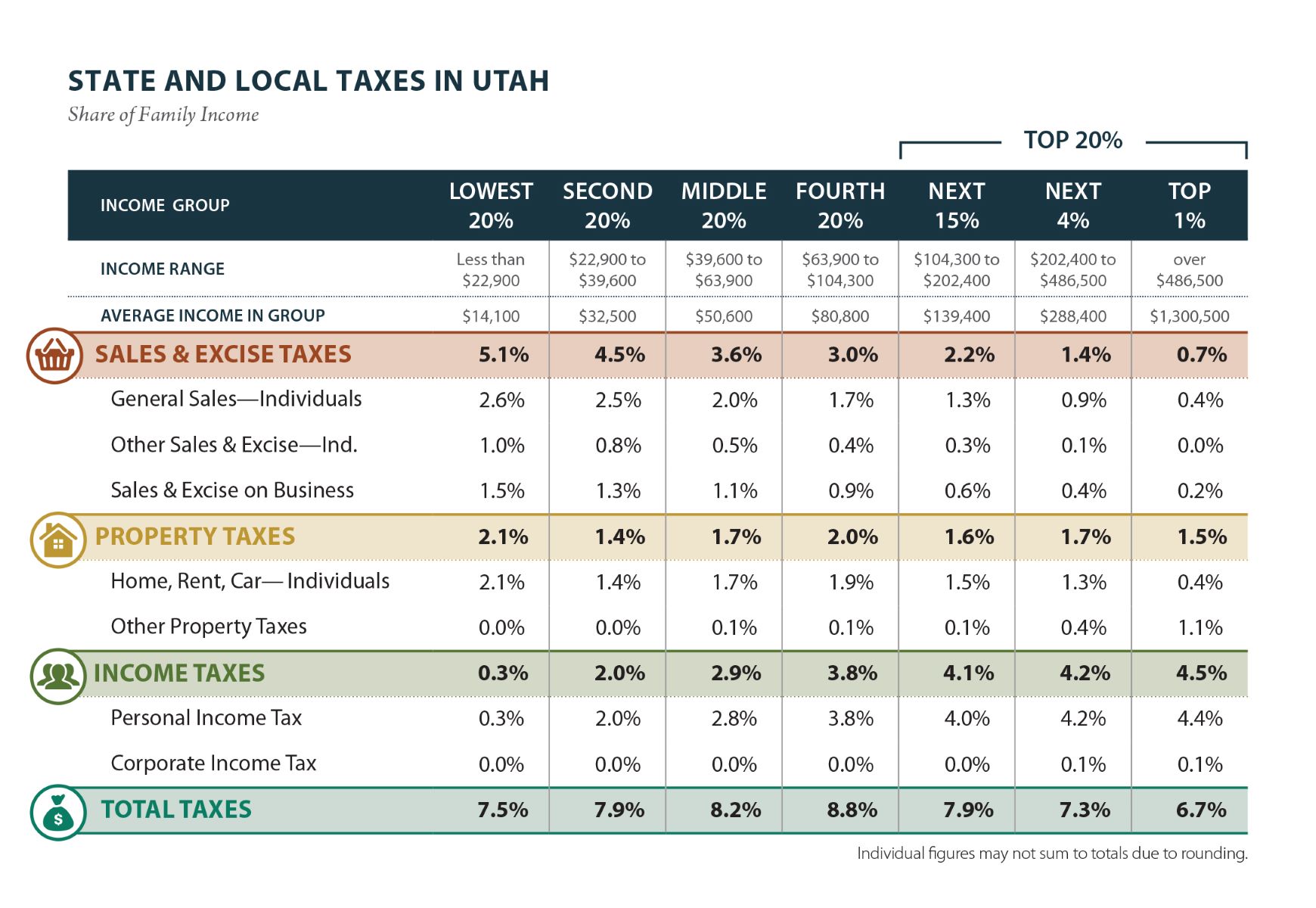Home>Finance>How To Calculate Private Savings Macroeconomics


Finance
How To Calculate Private Savings Macroeconomics
Published: January 16, 2024
Learn how to calculate private savings in macroeconomics with our comprehensive finance guide. Gain a deeper understanding of this key concept in just a few easy steps.
(Many of the links in this article redirect to a specific reviewed product. Your purchase of these products through affiliate links helps to generate commission for LiveWell, at no extra cost. Learn more)
Table of Contents
- Introduction
- Definition of Private Savings
- Components of Private Savings
- Formula for Calculating Private Savings
- Example Calculation of Private Savings
- Importance of Analyzing Private Savings in Macroeconomics
- Factors Affecting Private Savings
- Implications of Private Savings on Macroeconomic Stability
- Conclusion
Introduction
In the field of macroeconomics, understanding the concept of private savings is crucial in analyzing the overall health and stability of an economy. Private savings refer to the portion of an individual or household’s income that is not spent on consumption but rather set aside for future use. It plays a significant role in determining the level of investment, economic growth, and overall financial stability of a nation. By assessing private savings, policymakers and economists can gain valuable insights into the financial behavior of individuals and its impact on the wider economy.
Private savings serve as a vital source of funds for investment, which is essential for enhancing the productive capacity of an economy. It provides the necessary capital for businesses to expand, innovate, and create job opportunities. Moreover, private savings act as a cushion during periods of economic downturns or emergencies, providing individuals and households with a financial safety net.
By analyzing private savings, economists can also gain a better understanding of the spending patterns and financial habits of the population. This knowledge can be used to develop effective policies and strategies to encourage savings and improve financial literacy among individuals. Additionally, the study of private savings enables economists to assess the overall level of economic stability, as high savings rates are often associated with a healthier and more resilient economy.
In this article, we will delve deeper into the concept of private savings, explore its components, understand the formula for calculating private savings, and discuss the importance of analyzing private savings in macroeconomics. We will also highlight the factors that influence private savings and the implications it has on macroeconomic stability.
It is important to note that private savings should not be confused with public savings, which refers to the savings made by the government sector through budget surpluses. While public savings and private savings are interconnected and have an impact on each other, this article will primarily focus on understanding private savings.
Definition of Private Savings
Private savings, also known as household savings, is the portion of an individual or household’s disposable income that is not spent on immediate consumption but is instead set aside for future use. It represents the funds that individuals and households accumulate over time by saving a portion of their income after deducting taxes and consumption expenditures.
Private savings can take various forms, including savings accounts, certificates of deposit, retirement accounts, investments in stocks and bonds, and other financial instruments. These savings are typically held by individuals and households to prepare for future expenses, achieve financial goals, and provide financial security.
Private savings play a crucial role in the overall economy by fueling investment activities and contributing to economic growth. It provides a pool of capital that can be channeled into productive investments, such as business expansion, infrastructure development, and research and development. The availability of private savings enables businesses to access funding for expansion and innovation, ultimately driving economic progress.
The level of private savings can vary significantly across countries and regions. Cultural factors, income levels, and government policies can influence the propensity to save. In some cultures, saving is deeply ingrained, and individuals prioritize building a nest egg for the future. On the other hand, in regions where income levels are low, people may struggle to save due to limited disposable income.
Private savings also serve as a buffer during economic downturns or unexpected financial hardships. It provides individuals and households with the ability to tap into their savings to cover expenses during periods of reduced income or emergencies. This resilience helps to maintain financial stability at the individual and household levels and can contribute to the overall stability of the economy.
In the next section, we will explore the components that make up private savings, providing further insights into the various sources and factors that contribute to this important economic indicator.
Components of Private Savings
Private savings consist of various components that reflect the different sources and factors contributing to an individual or household’s savings. Understanding these components can provide valuable insights into the saving behavior and financial health of individuals and households within an economy. The key components of private savings include:
1. Disposable Income: Disposable income is the total income an individual or household receives after deducting taxes. It represents the amount of money available for saving and consumption. The higher the disposable income, the greater the potential for saving.
2. Consumption Expenditures: Consumption expenditures refer to the amount of money individuals and households spend on goods and services for immediate consumption. It includes expenses such as food, housing, transportation, healthcare, and entertainment. The portion of disposable income that is not spent on consumption forms the basis of savings.
3. Government Transfers: Government transfers, such as social security benefits, unemployment benefits, and welfare payments, can contribute to private savings. These transfers provide individuals and households with additional income that can be saved or used for consumption.
4. Financial Assets: Financial assets, including savings accounts, certificates of deposit, stocks, bonds, and other investments, contribute to private savings. These assets generate income through interest, dividends, or capital gains, which can be added to savings.
5. Real Estate and Property: Real estate and property ownership can also contribute to private savings. As the value of properties appreciates over time, individuals and households can accrue wealth that can be considered part of their savings.
It is important to note that the components of private savings can vary among individuals and households. Factors such as income levels, age, and financial goals can influence the distribution of savings across these components.
By analyzing these components, economists and policymakers can gain insights into the saving behavior of different demographic groups, identify trends, and develop strategies to encourage and promote saving among the population. Furthermore, understanding the distribution of savings can inform policies related to income inequality and wealth accumulation.
In the following section, we will explore the formula for calculating private savings, which provides a standardized method to measure and analyze this important economic indicator.
Formula for Calculating Private Savings
The formula for calculating private savings provides a standardized approach to measure the level of savings within an economy. It takes into account the different components that contribute to an individual or household’s savings. The formula is as follows:
Private Savings = Disposable Income – Consumption Expenditures
The formula subtracts consumption expenditures from disposable income to determine the amount of money that individuals and households save. Disposable income represents the total income earned after deducting taxes, while consumption expenditures reflect the amount spent on goods and services for immediate consumption.
By subtracting consumption from disposable income, the formula isolates the portion of income that is not spent and is instead saved. This calculation provides a valuable measure of the savings behavior within an economy and helps economists and policymakers understand the saving habits of individuals and households.
The resulting private savings figure can be expressed as an absolute value or as a percentage of disposable income. By expressing it as a percentage, economists can compare savings rates across different income levels and countries.
It is worth noting that the formula for calculating private savings does not take into account any changes in financial assets or real estate and property values over time. The focus is primarily on the current income and expenditure patterns related to saving behavior.
It is important to differentiate between private savings and public savings. Public savings is the difference between government revenue and expenditure. While private savings reflect the savings behavior of individuals and households, public savings reflect the saving behavior of the government sector. Both private and public savings are interconnected and can have an impact on each other and the overall economy.
In the next section, we will walk through an example calculation of private savings to illustrate how the formula can be applied in practice.
Example Calculation of Private Savings
Let’s consider an example to demonstrate how the formula for calculating private savings can be applied in practice. Suppose we have a household with a disposable income of $5,000 per month and monthly consumption expenditures of $3,000. To calculate the private savings, we can use the formula:
Private Savings = Disposable Income – Consumption Expenditures
Substituting the values into the formula:
Private Savings = $5,000 – $3,000
Private Savings = $2,000
In this example, the household’s private savings amount to $2,000 per month. This means that they are setting aside $2,000 of their disposable income for future use or investment, after deducting their consumption expenditures.
It is important to note that private savings can vary from month to month and over longer periods depending on various factors, such as changes in income, expenses, and economic conditions.
Calculating private savings allows us to gain insights into the saving behavior of households and individuals. It provides an indication of their financial discipline and their ability to accumulate funds for future needs, such as retirement planning, education expenses, or emergencies.
By examining private savings across different demographics, income groups, or regions, economists and policymakers can identify patterns and trends. This information can be used to develop targeted policies and initiatives to encourage savings, improve financial literacy, and promote economic stability.
In the next section, we will explore the importance of analyzing private savings in the field of macroeconomics and discuss the implications it has on the overall economy.
Importance of Analyzing Private Savings in Macroeconomics
Analyzing private savings is of paramount importance in the field of macroeconomics as it provides valuable insights into the overall health and stability of an economy. Understanding the saving behavior of individuals and households helps economists and policymakers gauge the level of financial stability, plan for future economic growth, and develop effective policies to foster sustainable development. Here are some key reasons why analyzing private savings is crucial in macroeconomics:
1. Investment and Economic Growth: Private savings serve as a critical source of funds for investment. By analyzing private savings, economists can determine the availability of capital for businesses to expand, innovate, and create job opportunities. Higher levels of private savings can lead to increased investment, which, in turn, fuels economic growth and prosperity in a nation.
2. Financial Stability and Resilience: Private savings act as a financial cushion during economic downturns or unexpected emergencies. Individuals and households with sufficient savings are better equipped to address financial hardships without resorting to excessive borrowing or relying on government assistance. Therefore, analyzing private savings helps gauge the level of financial stability and resilience within a society.
3. Government Policy and Economic Planning: The analysis of private savings helps inform government policies and economic planning. By understanding the factors that influence saving behavior, policymakers can design strategies to encourage savings, improve financial literacy, and promote long-term economic stability. Policies such as tax incentives, retirement savings programs, and financial education initiatives can be tailored based on the insights derived from analyzing private savings.
4. Income Inequality and Wealth Accumulation: Analyzing private savings can shed light on income inequality and wealth accumulation trends within a society. It helps identify disparities in savings rates among different income groups and demographic segments. This information can guide policymakers in developing measures to address income inequality, improve access to financial resources, and promote inclusive economic growth.
5. Consumer Spending and Aggregate Demand: Private savings impact consumer spending, which, in turn, affects the overall level of aggregate demand in an economy. Lower savings rates tend to result in higher consumption expenditure, stimulating economic activity. Conversely, higher savings rates can lead to lower consumer spending, potentially dampening aggregate demand. By studying private savings, economists can assess the potential impact on consumer spending and adjust monetary and fiscal policies accordingly.
By closely analyzing private savings, economists and policymakers can gain critical insights into the financial behavior of individuals and households. This information helps shape economic policies, foster sustainable growth, and ensure the long-term stability of a nation’s economy.
In the next section, we will explore the factors that influence private savings and understand how they can impact the overall level of savings within an economy.
Factors Affecting Private Savings
Private savings are influenced by a variety of factors that shape the saving behaviors of individuals and households. Understanding these factors is crucial in analyzing and predicting the level of savings within an economy. Here are some key factors that can impact private savings:
1. Income Level and Stability: Income plays a significant role in determining the ability to save. Higher income levels generally provide individuals and households with a greater capacity to save. Moreover, stable income sources and job security can instill confidence and encourage individuals to save more.
2. Interest Rates: Interest rates can influence the propensity to save. Higher interest rates on savings accounts and other financial instruments provide individuals with an incentive to save more as they can earn a higher return on their savings. Conversely, lower interest rates may discourage savings as the potential for returns diminishes.
3. Economic Conditions: The overall economic environment can impact private savings. During periods of economic uncertainty or downturns, individuals may be more inclined to save as a precautionary measure. Conversely, during periods of economic prosperity, individuals may feel more confident about their financial stability, leading to a higher inclination towards spending and lower savings rates.
4. Demographics and Life Cycle: Demographic factors, such as age and family composition, influence saving behaviors. Younger individuals may focus less on saving and more on immediate consumption, while older individuals may prioritize saving for retirement. Family composition, such as having dependents or elderly parents, can also impact the ability to save.
5. Government Policies and Incentives: Government policies and incentives can significantly influence private savings. Tax policies that provide deductions or exemptions for saving-related activities, such as retirement contributions or education savings, can encourage individuals to save more. Additionally, government initiatives that promote financial literacy and educate the population about the benefits of saving can positively influence savings behavior.
6. Cultural Factors and Social Norms: Cultural factors and societal norms play a role in shaping the saving habits of individuals. In some cultures, saving is highly valued and considered a virtue, leading to a higher propensity to save. Conversely, in cultures where immediate consumption and spending are emphasized, saving rates may be lower.
7. Access to Financial Services: The availability and accessibility of financial services and products can impact private savings. Individuals with greater access to banking facilities, investment options, and retirement plans are more likely to save. Lack of access to these services, especially in rural or underdeveloped areas, can hinder savings opportunities.
It is important to note that these factors can interact with each other and vary across different individuals and households within an economy. Analyzing the interplay of these factors can provide valuable insights into the saving behavior and patterns within a society.
In the next section, we will explore the implications of private savings on macroeconomic stability and the overall health of an economy.
Implications of Private Savings on Macroeconomic Stability
Private savings have significant implications for macroeconomic stability and the overall health of an economy. The level of private savings can influence various macroeconomic indicators and help assess the stability and resilience of an economy. Here are some key implications of private savings on macroeconomic stability:
1. Investment and Capital Formation: Higher levels of private savings provide a larger pool of capital available for investment. When individuals and households save more, it enables businesses to access funds for expansion, innovation, and productivity enhancement. Increased investment leads to higher levels of capital formation, which contributes to long-term economic growth and stability.
2. Consumption and Aggregate Demand: Private savings also impact consumption patterns and aggregate demand within the economy. When individuals save a higher proportion of their income, it may result in lower levels of immediate consumption. This, in turn, can potentially lower aggregate demand, affecting businesses, employment, and overall economic activity. Conversely, lower savings rates can lead to higher consumption and increased aggregate demand.
3. Economic Resilience: Higher private savings levels enhance the financial resilience of individuals and households. In the event of economic downturns or unexpected financial shocks, individuals with sufficient savings are better equipped to maintain consumption levels and meet financial obligations without relying heavily on borrowing or government assistance. This resilience contributes to overall economic stability and lessens the impact of adverse economic conditions.
4. Fiscal Policy and Public Debt: Private savings can influence the fiscal position of a country. Higher private savings may result in reduced demand for government borrowing, leading to lower interest rates and potentially minimizing the need for excessive public debt. Conversely, lower private savings may require the government to rely more heavily on borrowing, leading to increased public debt levels.
5. Wealth Accumulation and Inequality: Private savings can contribute to wealth accumulation within a society. Higher levels of private savings enable individuals to accumulate assets and build wealth over time. However, the distribution of savings can also impact income inequality, as wealthier individuals tend to save a larger proportion of their income compared to lower-income individuals. Consequently, analyzing private savings allows for a better understanding of wealth disparities and can inform policies aimed at promoting inclusive growth.
6. Monetary Policy and Interest Rates: Private savings can influence monetary policy and interest rates. Higher private savings imply increased availability of funds for lending, potentially leading to lower interest rates. Conversely, lower private savings may result in increased borrowing demand and higher interest rates to stimulate savings and reduce consumption.
7. Retirement Security: Private savings play a crucial role in ensuring retirement security for individuals and households. Adequate savings enable individuals to maintain their desired standard of living during retirement, reducing reliance on social security programs. Analyzing private savings helps policymakers identify gaps in retirement savings and develop policies to address retirement security concerns.
Overall, analyzing private savings provides valuable insights into the stability, resilience, and long-term growth prospects of an economy. It helps policymakers design appropriate fiscal, monetary, and social policies to foster sustainable economic development and financial well-being for individuals and households.
In the final section, we will conclude by summarizing the key points discussed in this article.
Conclusion
Private savings play a vital role in macroeconomics, serving as an important indicator of an individual or household’s propensity to save and contribute to the overall stability and growth of an economy. Through the analysis of private savings, economists and policymakers can gain valuable insights into the financial behavior of individuals and households, enabling them to make informed decisions and develop effective strategies aimed at promoting savings, ensuring economic stability, and fostering long-term growth.
We explored the definition of private savings and its components, highlighting the formula for calculating private savings. By understanding the factors that influence private savings, such as income levels, interest rates, economic conditions, demographics, government policies, and cultural factors, we can gain a comprehensive picture of saving behaviors and patterns within a society.
The implications of private savings on macroeconomic stability are far-reaching. Private savings impact investment levels, consumption patterns, economic resilience, fiscal policy, wealth accumulation, interest rates, and retirement security. By analyzing private savings, policymakers can make evidence-based decisions and implement targeted policies to ensure economic growth, reduce income inequality, and promote financial well-being for all individuals and households.
In conclusion, private savings serve as a crucial driver of economic stability and growth. By encouraging saving behaviors and developing supportive policies, societies can foster a culture of financial responsibility, wealth accumulation, and long-term economic prosperity. Understanding private savings and its implications empowers policymakers and economists to make informed decisions, contributing to the overall well-being of individuals, households, and the nation as a whole.














